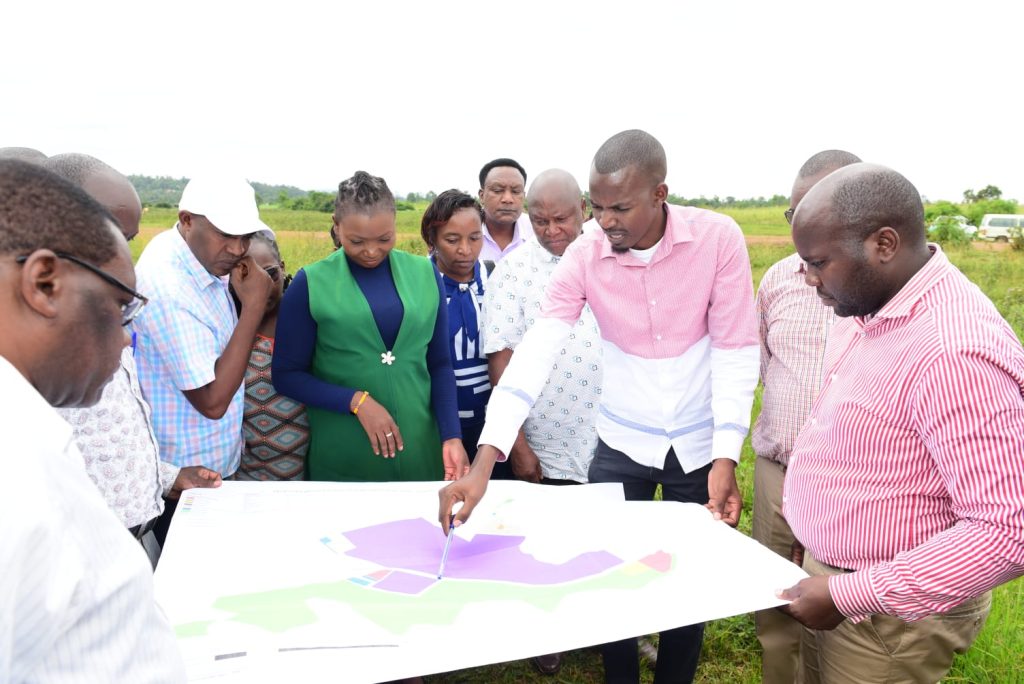Kirinyaga Governor Anne Waiguru has said that Sagana Industrial Park is expected to create more than 10,000 direct jobs that will breath new life into the town.
Waiguru said 34 investors have applied to set up industries at the facility. The park will host an Export Processing Zone (EPZ) and a Special Economic Zone (SEZ) that will house the County Aggregation and Industrial Park (CAIP).
“It targets investors in Agro-processing industries for produce such as dairy, essential oils, integrated fruits and vegetables, beverages processing, supportive industries such as agrovet processors, packaging factories, banks, hospitality, exports and logistics,” she said.
Kirinyaga is among five counties that will benefit from Ksh. 1 billion from the National government for the development of the EPZ.
The Council of Governors (COG) Chair said the town has all the necessary infrastructure like railway line, dual carriage road and water among others to support investment in manufacturing and Agro-processing.
“This creates a great opportunity to grow jobs along the various value chains, raise incomes and close rural-urban inequality gaps as locals also participate in global supply chain through value addition,” Waiguru added.
The governor said her administration is committed to giving Sagana a facelift and as the setting up of the Industrial Park gain momentum, the streets of the town have already been cabro-paved.
Peter Warui, a resident who grew up here, still hold memories of the vibrant town.
“Sagana was the biggest and busiest town in Kirinyaga, it was an industrial hub and home to all tribes, the town was full of life, with the decline of the railway transport, the town also died, it became deserted,” he said.
Wairui says the initiative by Governor Waiguru to set up industrial park in the area will revive the economy of the town.
“The economy of Sagana was being driven by the railway station, it was ranked one of the most vibrant towns and there was a lot of money in circulation. This industrial park will give our town another lease of life. We are looking forward to getting jobs,” added Warui.
Joel Bakari, a businessman, recalled that traders from as far as Meru and Chuka had warehouses in the town where their goods would be stored after being offloaded from the train.
“As traders we eagerly waiting for the setting up of the industries. We know those who will be working there will requires houses to rent and food to eat, we will seize the opportunity,” he said.
Simon Njoroge, also a trader, says the value of property in the town and its environs has started going up as investors rush to get a piece of the once a boomtown.
“We are optimistic that the Industrial Park will attract investments and create jobs for our people and stimulate economic growth of our county. We have hopes that our businesses will thrive again.

Sagana is probably one of the most famous rural towns in Kenya for not only having inspired the rhumba song “Afro Mtoto wa Sagana” but also because of its history as an old industrial hub.
Located in Kirinyaga County, the small old town sits snuggly along Kenya’s longest river, Thagana, from which it got its name.
It is here where John Ngereza, band leader for Orchestras Les Wanyika met and fell in love with Margaret Wambui Mwangi aka Afro.
It is estimated that the town started around 1922 with the first permanent commercial building being established by the colonial government in the 1930s.
The town was home to the only train sub-station in Mount Kenya region that kept its lifeblood flowing, thanks to the Nairobi-Nanyuki railway line.
In the 70s and 80s, the town was primarily known for hosting coffee, leather, fish, flour milling, oil depots, timber yards and a vibrant hotel and entertainment industry whose driving force was largely the people working in the factories.
Sagana was known as a “haven for entertainment” where true and illicit love thrived. The town’s entertainment industry was largely driven by the huge cashflow from the industries.
Traders from as far as Meru, Embu, Isiolo, Nyeri and Murang’a depended on the railway line to move their goods from Nairobi and Mombasa and the town hosted dozens of go-downs which were used for storage.
The town’s economy was a vibrant tapestry of trade, services and manufacturing and these industries were the engines of development and night escapades that made the town famous. The industries attracted a huge workforce from as far as Rift Valley and Western Kenya.
As Sagana was a bustling in commerce, its streets were buzzing with activities both day and night. It was synonymous with night clubs which played loud music till dawn.
However, the gradual decline of the country’s railway transport network, which began in 1980s crippling one of Kenya’s oldest transport infrastructures, did not spare Sagana.
The emerging industrial hub of 70s and 80s died gradually leaving behind a trail of desperation from business owners who had invested in the town.
Today, the town wears its history like a proud badge, its empty warehouses and closed gates to once vibrant industries speaking volumes of its glorious past.
For Jeremiah Makimi, Kariti Ward Member of the County Assembly (MCA), the empty bricks-and-mortar are a stuck reminder of the bygone era of prosperity.
Makimi says that despite the economic downturn, the local community still holds on its vibrant spirit, a testament to its resilience.
However, the MCA says ongoing efforts by Kirinyaga Governor Anne Waiguru to set up an industrial park in the area have invoked a journey down the memory lane, that of jobs and money.
“But the spirit of the people, the enthusiasm and the hope are starting to come together. With the upcoming Industrial Park by Governor Anne Waiguru, there is hope that the town will rise again. People here are anxious to see the town roar back to life with industries,” Makimi said.






